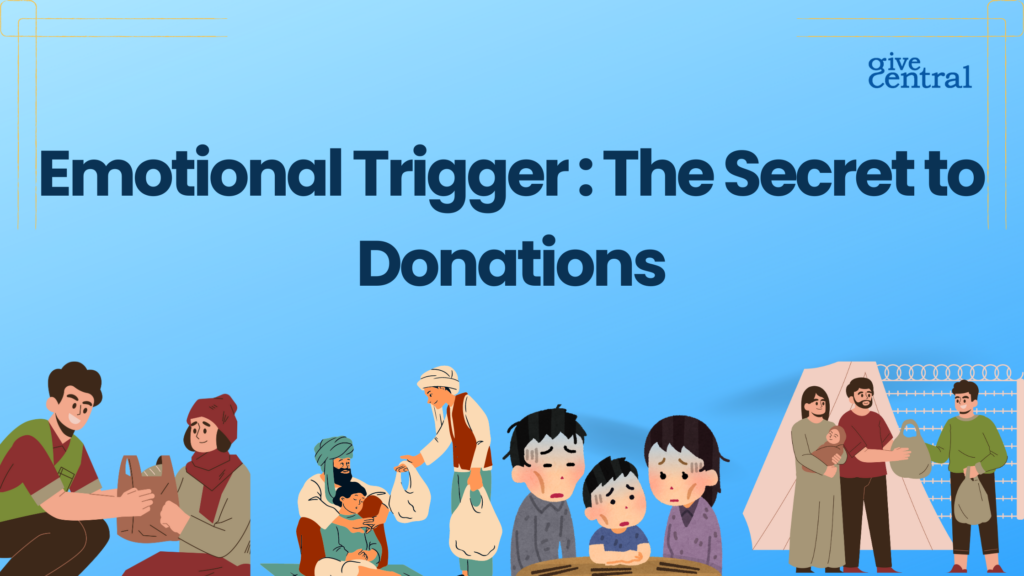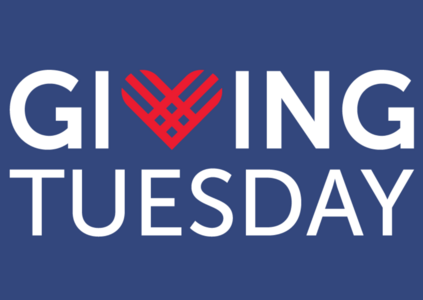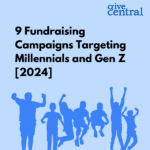Humans are social animals. Emotions motivate us all, and this is particularly true when it comes to donating. Emotional triggers inspire donation. Our emotions frequently influence charity decisions more than logical thinking, whether out of empathy, compassion, or a desire to change the world.
One of the fundraising secrets for nonprofits is understanding these emotions, which helps create strong, meaningful appeals that connect with potential donors.
We are more likely to donate when we feel an emotional connection to the cause or the impact that particular donation will make. According to a study, 82% of spontaneous donations are driven by emotional responses.
Hence as a fundraising institution, it is important to understand these emotional triggers create powerful, meaningful appeals that inspire generosity and build long-lasting donor relationships.
The psychology behind giving
Emotions are a powerful motivating factor for charitable donations. Let us discuss each emotional triggers inspires donations
- Empathy: The ability to understand and share the feelings of other people can significantly drive donations. Potential donors are often driven to help when they see someone in need. Using compelling pictures and narratives that highlight the challenges experienced by the needy might elevate this emotional response
- Guilt: Empaths often experience deep emotions, and many people may feel guilt when comparing their comfortable lives to those less fortunate. This guilt trip may inspire people to give. They believe that paying it forward will help solve the imbalance in our socioeconomic system.
Hence, giving becomes a means for people to reduce their guilt while improving the lives of the less fortunate. This feeling is a strong motivation for acts of giving.
- Hope: The guilt gives them a ray of hope. When people believe their donation can make a real difference, it gives them hope. This hope motivates them to give, as they trust their contribution will bring about positive change.
A donor might be compelled to donate to a school for underprivileged children. They feel encouraged and uplifted to donate, knowing they can truly make an impact, because they think their money will help children get an education and have a better future.
- Peer Influence: People are often motivated by the actions of others. Seeing friends or family donate can create a sense of social responsibility and encourage individuals to contribute.
The Personal Appeal Effect:
Have you ever felt deeply emotional when hearing about someone in pain? It can be so overwhelming that the story stays with you for days. This powerful urge to help someone in need is a natural response, and it’s known as the Personal Appeal Effect. It’s when a single story or face makes the situation feel more real and personal, driving us to take action and offer help.
This is also an emotional trigger that the organizations can leverage to design their donation appeals.
Now that we’ve uncovered the different emotional triggers behind giving, let’s dive into some simple strategies to use these emotions to encourage donations. Let’s explore how to effectively weave these emotions in making the donation appeals
5 Strategies to Leverage Emotional Triggers in Fundraising Campaigns
Using emotional psychology as a tactic to generate funds for the fundraising campaign can be a game-changer
- Storytelling: This is the most effective way to communicate with your donors. It connects them personally with a cause.
For instance share a story about a single mother struggling to provide for her children, highlighting her challenges and how support has helped her overcome them.
This personal story lets potential donors connect emotionally, making them more likely to give because they see the real impact their donation can have on someone’s life.
- Visual Content: Incorporate powerful images and videos into your fundraising campaigns. Visual storytelling can evoke emotions more effectively than text alone, helping potential donors visualize the impact of their contributions.
Include photos of smiling children from the school that received the donation in your thank-you emails. These happy images help donors see the real impact of their contribution, making the gratitude more personal and meaningful. It gives them a sense of emotional satisfaction.
- Personalization: When emailing donors, acknowledge their past contributions and share meaningful updates on how their donations have made a difference.
Eg Provide them with details of the families or institutions who have benefited from their contributions.
This personalized information sharing reinforces their emotional connection to the cause and shows the difference their donations have made.
- Create an Urgency: Focus on immediate issues to make your campaign seem more urgent. For example, you could appeal to support earthquake victims, stressing the urgent need to rebuild homes, provide medical aid, and deliver food supplies.
By highlighting the critical situation, donors are more likely to respond immediately and donate..
This strategy triggers compassion and panic and encourages potential donors to respond more quickly.
- Use social media to showcase testimonials from the beneficiaries and tag the donors. These personalized testimonials will trigger a sense of satisfaction among the donors.
It helps build trust with the organization and encourages them to donate generously in future appeals. These online testimonials show transparency and also motivate others to donate in the future.
Understanding the emotional triggers behind charitable donations is crucial for nonprofits to boost their fundraising efforts and also a tool to build long-lasting relationships with their donors.
Want to inspire more generous donors? Don’t miss the chance to implement these funding secrets for nonprofit in your Giving Tuesday and year-end fundraising appeals!
Stay ahead of your competitors. Use these emotions-tapping insights to create compelling campaigns that resonate with your campaigns before they implement it
Make your appeal impactful and grab the opportunity to make a real impact!
Get in touch with our team to guide you further on this journey
charitable giving donor retention easy fundraising ideas easyfundraising nonprofit fundraising storytelling
Last modified: November 28, 2024


















